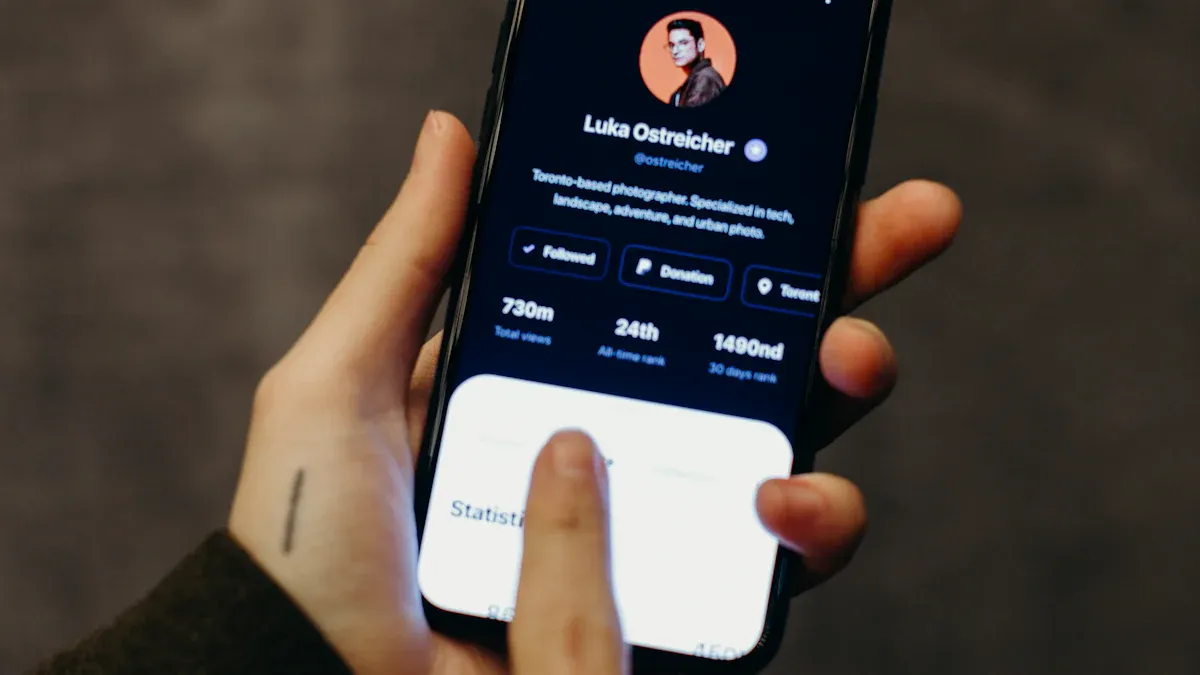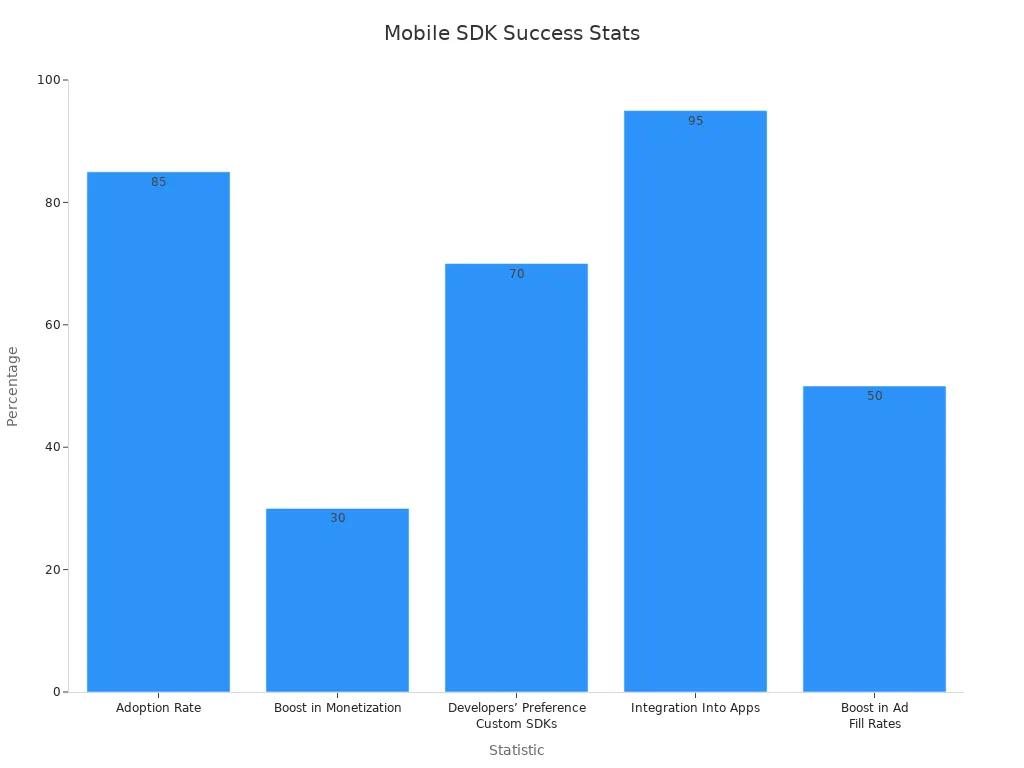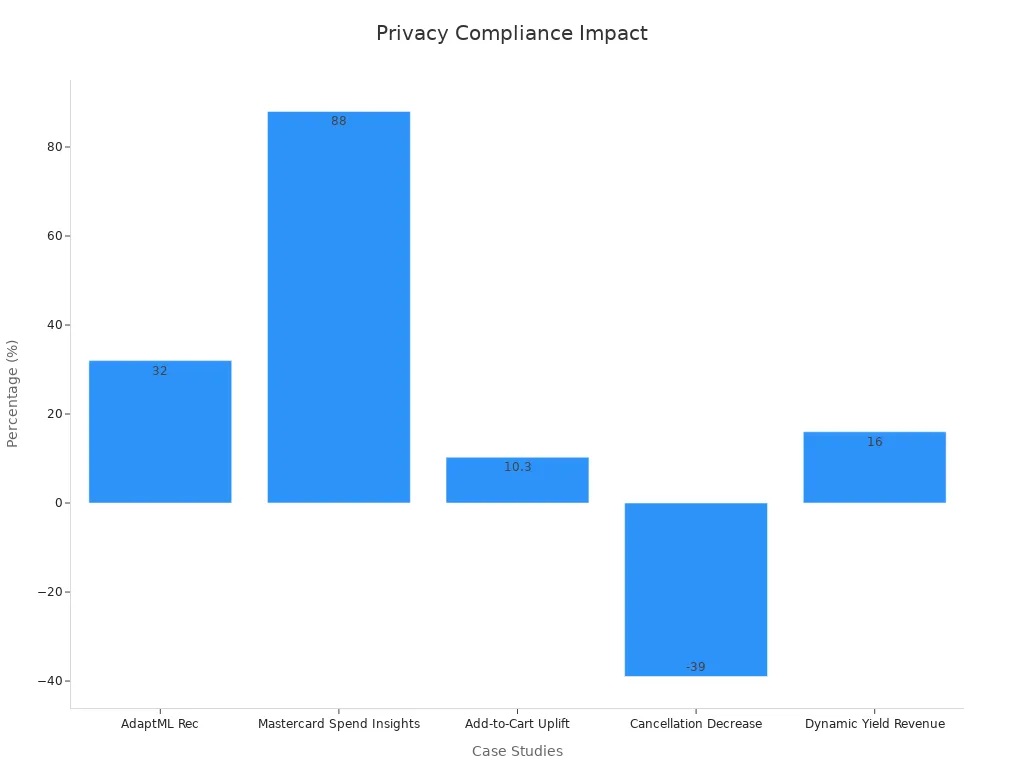
Think about opening an app that knows what you want. That’s the power of personalized mobile experiences. They aren’t just extra anymore—they’re a must-have. About 77% of people say they stay loyal to brands with these custom features. Why? It makes things simpler and more fun. For companies, it’s not just about happy users. Personalization can increase earnings by up to 40% over rivals who skip it. When apps match what users like, they build stronger bonds, turning occasional users into loyal fans.
Key Takeaways
Custom mobile experiences make users stay loyal. Around 77% of people like brands with special features for them.
Using data to learn what users like keeps them interested. Apps that match user preferences make them return often.
Personalization helps companies earn more money. Businesses using it can make up to 40% more than others.
Protecting user privacy builds trust. Explain how you collect data so users feel secure.
Always work on improving. Test and update your app often based on what users say to make it better.
Benefits of Personalized Mobile Experiences

Boosting User Engagement
Think about using an app that feels made for you. That’s what personalized apps do. They change content to match your likes. This makes every click and swipe feel special. Apps that know your preferences keep you coming back.
Personalization greatly improves how users feel about an app. By changing the app based on what users do and like, it creates better experiences. This makes users more engaged and happier with the app.
Apps that use data to adjust to you make you feel important. This keeps you interested and wanting to explore more. Things like custom suggestions or alerts make a big impact.
Enhancing Retention and Loyalty
Getting users to stay is as important as getting downloads. Personalization helps keep users loyal. When an app meets your needs, you’re more likely to keep using it.
Statistic | الوصف |
|---|---|
Bank users who value personalization for staying loyal (Accenture, 2023) | |
98% vs 75% | Retention rates: high personalization vs low personalization (Forrester, 2023) |
15-20% | Revenue growth in banks using personalization (The Financial Brand, 2023) |
These stats show how personalization builds loyalty. Apps that make you feel special keep you coming back again and again.
Driving Revenue Growth
Personalization doesn’t just make users happy—it helps businesses earn more. Apps with custom features encourage users to spend money. This could be through purchases or subscriptions.
Metric | Example Evidence |
|---|---|
Active Users | Twitter grew active users by 12% in 2022, boosting revenue. |
User Retention Rate | Starbucks kept more users in 2023 with custom offers, earning more. |
In-app Purchase Rate | Supercell saw more in-app buys in 2022, growing revenue. |
Screen Flow | Amazon improved app flow in 2023, reducing cart drops and selling more. |
When apps like Starbucks or Amazon use personalization, they succeed. These methods make users happy and help businesses earn more. It’s a win for everyone.
Key Strategies for Mobile App Personalization
Making a mobile app feel personal starts with knowing your users. By using data, grouping users, and onboarding well, you can create an app that feels unique to everyone. Let’s explore how to do this.
Collecting and Analyzing User Data
البيانات is key to making apps personal. Without it, you’re just guessing. By studying user data, you can find patterns and learn what users like.
Here’s how to use your data:
Track user actions with tools. See what features they use most.
Store customer info in CRM systems. Use it to improve their experience.
Combine data sources like surveys or social media. This gives a full view of users.
What It Does | How to Use | |
|---|---|---|
Web Analytics Tools | Shows how users interact with your app. | Use it to see what users like and improve features. |
CRM Systems | Keeps customer data organized. | Study this data to make better user experiences. |
Social Listening Tools | Tracks what people say on social media. | Learn what users think and want from your app. |
When you use good data from many places, you can make apps more fun and personal.
Segmenting Users for Targeted Experiences
Not all users are the same, so treat them differently. Grouping users by shared traits helps you give them what they need.
Here are ways to group users:
Demographic groups: Sort users by age, gender, or location. For example, show special offers to women aged 20-30.
Interest-based groups: Focus on hobbies or likes. If someone loves cooking, show recipes or kitchen tools.
Tech-based groups: Group users by their devices. This helps you make the app work better for their tech.
By grouping users, you can guess what they’ll like, suggest things they enjoy, and keep them using your app.
Making User Onboarding Better
Onboarding is your chance to impress new users. A good start helps users stay longer and enjoy the app more.
Here’s how to improve onboarding:
Make onboarding personal: Use data to show features users will like. For example, in a music app, show playlists based on their favorite genre.
Add fun to onboarding: Use rewards or progress bars to make it exciting. This makes learning about the app feel like a game.
Show value fast: Help users see the app’s benefits quickly. For instance, guide them to finish their first task in minutes.
Tip: Adjust onboarding for different users. Beginners may need simple steps, while experts might want advanced features right away.
When you focus on user-friendly onboarding, you make the app easier to use and keep users coming back.
Tools and Technologies for Personalization
AI and Machine Learning for Smarter Predictions
AI and machine learning make apps smarter and more personal. They guess what users want before they even ask. By studying user habits, AI creates experiences that feel unique.
AI uses tools like machine learning and natural language processing (NLP) to study user data.
Here’s how AI and machine learning help apps:
Machine learning looks at what users do, like past buys or searches. It then suggests things they might enjoy.
AI changes prices quickly based on stock, demand, or user habits. This helps users find deals they like.
AI tools create ads that match user interests. They predict how users will react, making ads work better.
AI also powers chatbots for custom help and uses face recognition for in-store offers. With AI, apps feel more personal and easy to use.
CRM Platforms for Managing User Data
CRM platforms help organize and use user data. They let businesses create better, more personal experiences. CRMs build detailed profiles and improve how companies connect with users.
Benefit | What It Does |
|---|---|
Better Customer Interaction | CRMs use data to improve how businesses talk to users. |
Smarter Grouping | CRMs group users by traits, making messages more personal. |
Stronger Loyalty | Personal messages make users feel special, keeping them loyal. |
For example, a CRM can send emails with users’ names and suggest items they might like. This makes users feel noticed and happy. Using CRMs helps businesses treat every user like they matter.
Mobile SDKs and APIs for Easy Features
Mobile SDKs and APIs make adding features to apps simple. They save time and help apps run smoothly. Developers like them because they’re easy to use and improve performance.

Here’s why SDKs and APIs are helpful:
Over 85% of top apps use at least one SDK.
Apps with ad SDKs earn 30% more money.
SDKs are in 95% of apps, showing how important they are.
SDKs also boost ad success by 50%, making them popular with developers. By using SDKs and APIs, apps can offer personal features that keep users happy and coming back.
Privacy and Ethical Considerations
Making apps personal is exciting, but it comes with duties. You must protect privacy and act ethically to gain user trust. Let’s see how to do this.
Clear Data Collection Practices
Being honest about data is very important. Users should know what you collect and why. This helps them feel safe and in control.
Here’s how to stay clear:
Explain clearly: Tell users how their data improves the app. For example, say their likes help you suggest better options.
Simple requests: Use easy words when asking for permissions like location. Don’t confuse users with hard-to-understand terms.
Keep users updated: Share changes in privacy rules often. This shows you care about their trust.
Aspect | Details |
|---|---|
User Choices | Clear permissions help users understand and decide better. |
Honest Data Use | Be open about how data helps make the app better. |
Better Understanding | Users feel safer when privacy rules are easy to follow. |
Tip: Being honest builds trust and improves your brand. When users feel informed, they’ll keep using your app.
Following Privacy Rules
Obeying privacy laws isn’t just required—it shows you respect users’ rights. Rules like GDPR and CCPA guide how to handle personal data.
Here’s how to follow the rules:
Ask first: Always get permission before collecting data. Let users choose to agree or not.
Only take what’s needed: Don’t ask for data you won’t use. For example, skip location if it’s not necessary.
Check often: Review your data practices to match current laws. This avoids mistakes.
Compliance Metric | الوصف |
|---|---|
Limited Data Use | Only collect data with clear permission to avoid misuse. |
Consent Systems | Build tools to manage user permissions easily. |

Note: Following these rules keeps you safe and builds trust. Users prefer apps that respect their privacy.
Gaining Trust with Ethical Personalization
Ethical personalization means helping users without crossing limits. Respecting their choices builds lasting trust.
Here’s how to stay ethical:
Be open: Tell users how their data helps create features. For instance, explain that browsing history helps suggest items they like.
Respect choices: Don’t push features if users opt out.
Protect data: Use strong security to keep user info safe. This shows you care about their safety.
Why it matters:
70% of people avoid brands that don’t protect their data.
49% trust brands more when they explain how data is used.
Good personalization makes users happier and more engaged.
Callout: Acting ethically helps both users and your business. Trusted users stay loyal and recommend your app to others.
By focusing on honesty, rules, and ethics, you can make apps that users love while keeping their privacy safe. It’s a win for everyone.
Testing and Improving User Onboarding Experiences
Trying A/B Testing for Better Features
A/B testing helps make onboarding better. It compares two versions to see which one works best. For example, you can test two ways to welcome users and find out which keeps them interested.
Here’s how to do it:
Make two versions of the onboarding process (A and B).
Split users into two groups randomly.
Check things like how many finish onboarding and their feedback.
Study the results to pick the better version.
A/B testing works well. For example:
A better onboarding flow made feature use grow by 50%.
A small change raised signups by 12% with strong proof.
These examples show how little tweaks can help a lot. By testing and improving features, you can make onboarding fun and easy for users.
Using Feedback to Improve
User feedback is super helpful for fixing onboarding. Surveys and reviews show what users like and what bothers them. Listening to this feedback helps you make the app better for everyone.
Why feedback matters:
It helps you group users for special onboarding.
It makes users happier when you fix their problems.
For example, surveys can show where users get stuck. You can then change the process to make it easier. When users see you care about their opinions, they’ll stay longer.
Tip: Ask for feedback often and fix issues fast. This builds trust and keeps users happy.
Making Small Changes Over Time
Improving onboarding never stops. Keep checking user data and feedback to make small updates that lead to big improvements.
Why small changes help:
Benefit | What It Does |
|---|---|
Better User Experience | Fixing problems makes onboarding smoother and easier. |
Higher Completion Rates | Improved onboarding means more users finish it. |
Smarter Decisions | Using real data helps you make better choices. |
Spot Problems Early | Watching closely helps you fix new issues fast. |
Personal Touch | Changing onboarding based on user actions makes it more fun. |
You can also use predictions. By looking at past user actions, you can guess what they’ll do next and adjust onboarding to fit. This keeps your app useful and exciting.
Tips for success: Test often, listen to users, and make small updates. These steps will help you create onboarding that users enjoy and remember.
Personalized mobile experiences are no longer optional—they’re a must-have. Apps that match what users like make them feel special. This leads to happier users who stick around longer. About 77% of people prefer brands that offer custom features. Companies using personalization earn 40% more than those that don’t.
To build these experiences, respect user privacy and act fairly. Be clear about how you use data to improve the app. Following privacy rules and being honest helps users trust you and stay loyal.
Keep testing and improving to make apps better. Try A/B testing, listen to feedback, and make small updates often. Companies that focus on easy and personal features see 20% more user engagement.
By using personalization, you can connect with users, make them happy, and grow your business steadily.
التعليمات
What is mobile app personalization?
Mobile app personalization changes the app to fit your likes. It uses data like what you do, where you are, or what you enjoy. This helps show content and features that match you. It feels like the app is made just for you.
How does personalization improve user engagement?
Personalization makes users feel special. When the app shows things you like, you’ll want to use it more. This keeps you interested and coming back often.
Is user data safe during personalization?
Yes, if the app follows privacy rules. Good apps only collect what’s needed and explain why. They also protect your data to keep it safe and earn your trust.
Can personalization work for all users?
Yes! Personalization works for everyone by learning what they like. Whether you’re new or experienced, the app adjusts to make your experience better.
How can I improve my app’s onboarding process?
Keep it simple and helpful. Show users why the app is great quickly. Guide them through important features. Use their feedback to make onboarding easier and better over time.
 New Aura Ring Luxury Fitnesss Tracker
New Aura Ring Luxury Fitnesss Tracker  Lastest Model Quantum Flip
Lastest Model Quantum Flip  Free Shipping Worldwide
Free Shipping Worldwide 24/7 Customer Support
24/7 Customer Support Pay Over Time with PayPal & Klarna
Pay Over Time with PayPal & Klarna



